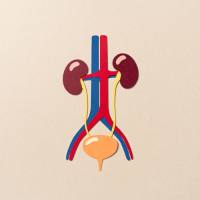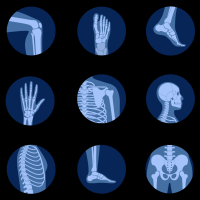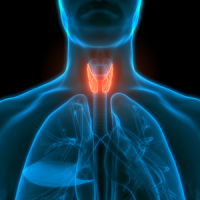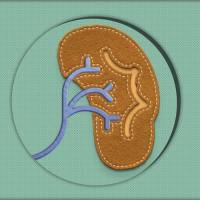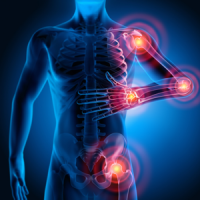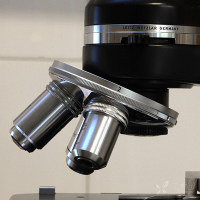【medical-news】肺癌骨转移模型鼠建立
[url= http://www.ncbi.nlm.nih.gov/sites/entrez?cmd=search&db=PubMed&term=%20Li%2BM [auth]]Mi Li[/url],1 [url= http://www.ncbi.nlm.nih.gov/sites/entrez?cmd=search&db=PubMed&term=%20Zhou%2BM [auth]]Mingliang Zhou[/url],1 [url= http://www.ncbi.nlm.nih.gov/sites/entrez?cmd=search&db=PubMed&term=%20Gong%2BM [auth]]Meng Gong[/url],1,2 [url= http://www.ncbi.nlm.nih.gov/sites/entrez?cmd=search&db=PubMed&term=%20Ma%2BJ [auth]]Junrong Ma[/url],1,2 [url= http://www.ncbi.nlm.nih.gov/sites/entrez?cmd=search&db=PubMed&term=%20Pei%2BF [auth]]Fuxing Pei[/url],4 [url= http://www.ncbi.nlm.nih.gov/sites/entrez?cmd=search&db=PubMed&term=%20Beamer%2BWG [auth]]Wesley G. Beamer[/url],3 [url= http://www.ncbi.nlm.nih.gov/sites/entrez?cmd=search&db=PubMed&term=%20Shultz%2BLD [auth]]Leonard D. Shultz[/url],3 [url= http://www.ncbi.nlm.nih.gov/sites/entrez?cmd=search&db=PubMed&term=%20Hock%2BJM [auth]]Janet M. Hock[/url],2 and [url= http://www.ncbi.nlm.nih.gov/sites/entrez?cmd=search&db=PubMed&term=%20Yu%2BX [auth]]Xijie Yu[/url]

1Laboratory of Endocrinology and Metabolism, West China Hospital, Sichuan University, Chengdu, Sichuan 610041, P.R. China
2Maine Institute for Human Genetics and Health, Bangor, ME, USA
3The Jackson Laboratory, Bar Harbor, ME, USA
4Department of Orthopaedic Surgery, West China Hospital, Sichuan University, Chengdu, Sichuan 610041, P.R. China

Dr Xijie Yu, Laboratory of Endocrinology and Metabolism, West China Hospital, Sichuan University, No. 37 Guoxue Xiang, Chengdu, Sichuan 610041, P.R. China; Email: xijieyu@hotmail.com
Author information ▼ Article notes ? Copyright and License information ?
Received November 23, 2011; Accepted January 20, 2012.
Copyright © 2012 , Spandidos Publications
Go to:
Abstract
Metastases account for 90% of lung cancer mortalities, frequently target the skeleton and lead to rapid deterioration in quality of life. The molecular mechanism underlying bone metastases is largely unknown. Development of xenograft mouse models, such as the severe combined immunodeficient (SCID) CB-17 mouse and the non-obese diabetic (NOD)/SCID mouse, both of which lack functional B- and T-cells and are able to host allogeneic or xenogeneic tumor cells, has made great contributions in this area. However, residual natural killer (NK) cells in these models are able to significantly modify local tumor growth and metastasis. Treatment with anti-murine IL-2 receptor β chain Ab (TM-β1) antibody can abrogate NK cell activity in vivo; however, the antibody treatment may result in unexpected effects and the stability is hard to control. To overcome these shortcomings, we evaluated xenografts in NOD-scid IL2Rγnull immunodeficient mice that lacked mature T cells, B cells and functional NK cells. We compared the target tissue distribution of the human small cell lung cancer cell lines SBC-5 and SBC-3. Gross necropsy and whole skeletal X-ray film examination of the host mice were conducted 30 days post-tail vein injection. The SBC-5 cells colonized bone and formed lytic lesions. The cells also colonized liver, spleen and, less frequently, the pancreas, ovary and kidney. The SBC-3 cell xenografts formed easily visible tumor foci in the liver, pancreas, ovary/uterus and kidney, but not bone metastases. Our results showed that SBC-5 cells in NOD-scid IL2Rγnull immunodeficient mice provide a suitable xenograft model system for bone metastasis of human lung cancer. This novel animal model may therefore be used to study the molecular pathway of bone metastases and to evaluate targets for effective therapies.
Keywords: lung cancer, bone metastasis, animal model





